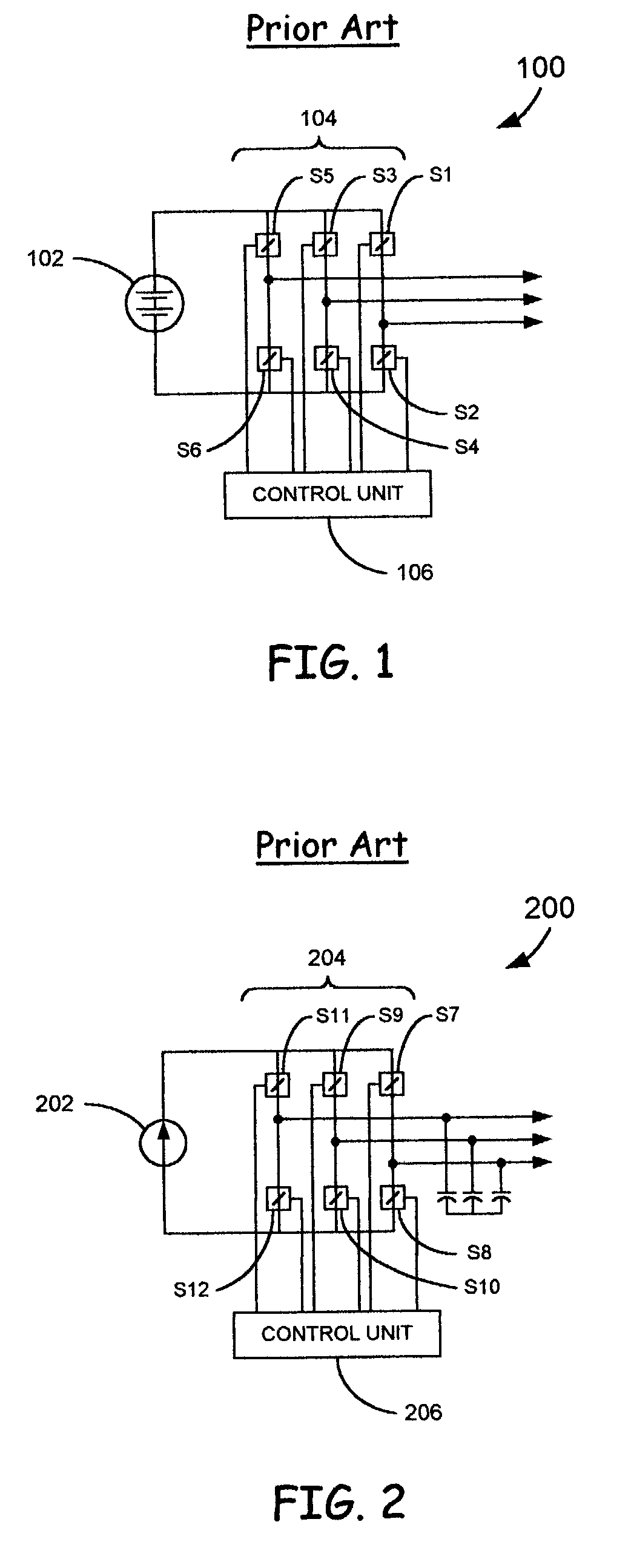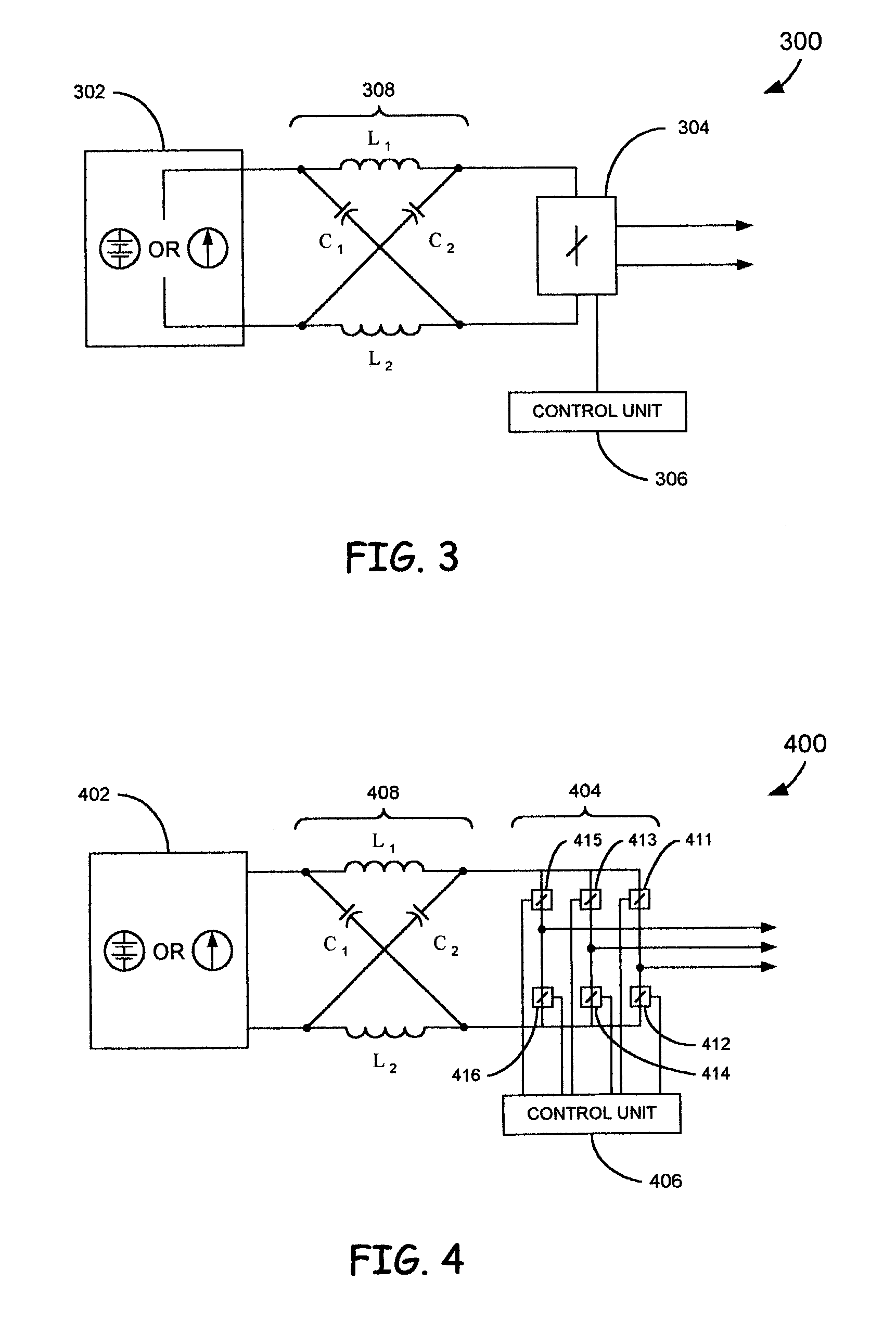Impedance source power converter
a power converter and source technology, applied in the direction of dc-ac conversion without reversal, process and machine control, instruments, etc., can solve the problems of increasing system cost, reducing system efficiency, and v-converter having a number of conceptual and theoretical limitations
- Summary
- Abstract
- Description
- Claims
- Application Information
AI Technical Summary
Problems solved by technology
Method used
Image
Examples
Embodiment Construction
)
[0028]According to the present invention, an impedance source power converter (Z-converter) utilizes an impedance network to couple a main converter circuit to a power source or load. Implementation of the impedance network, within the power converter, reduces or eliminates many of the negative attributes of V-converters and / or I-converters. As used herein, the term “converter” broadly includes DC-DC converters, AC-AC converters, converters performing AC-DC conversion and inverters performing DC-AC conversion.
[0029]FIG. 3 shows one embodiment of the present invention, which includes a two port network 308 that includes inductors L1 and L2 and capacitors C1 and C2 connected in an ‘X’ configuration. The ‘X’ configuration is employed to provide an impedance source to couple the converter (or inverter) to a DC source 302. The DC source 302 can be either a voltage source or a current source. As such, the DC source 302 can be a battery, a diode rectifier, a thyristor converter, a fuel ce...
PUM
 Login to View More
Login to View More Abstract
Description
Claims
Application Information
 Login to View More
Login to View More - R&D
- Intellectual Property
- Life Sciences
- Materials
- Tech Scout
- Unparalleled Data Quality
- Higher Quality Content
- 60% Fewer Hallucinations
Browse by: Latest US Patents, China's latest patents, Technical Efficacy Thesaurus, Application Domain, Technology Topic, Popular Technical Reports.
© 2025 PatSnap. All rights reserved.Legal|Privacy policy|Modern Slavery Act Transparency Statement|Sitemap|About US| Contact US: help@patsnap.com



